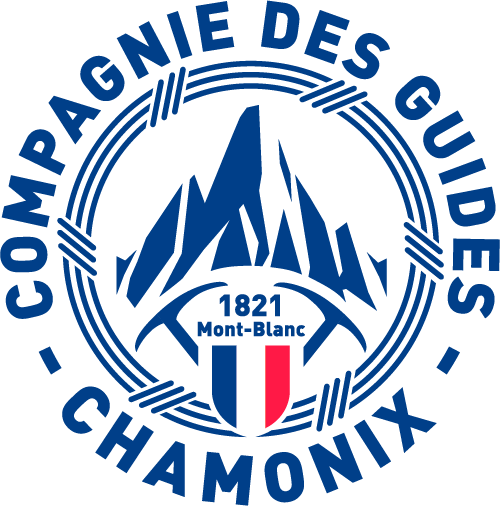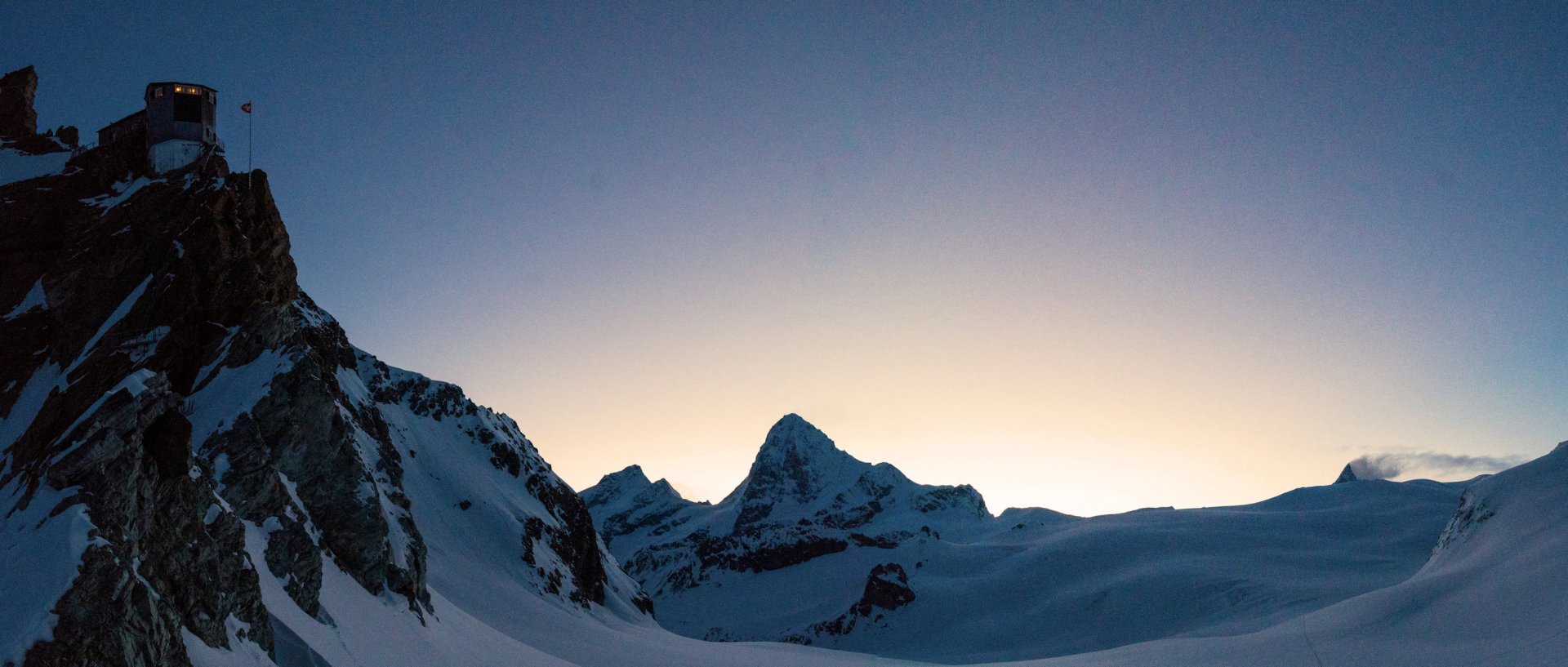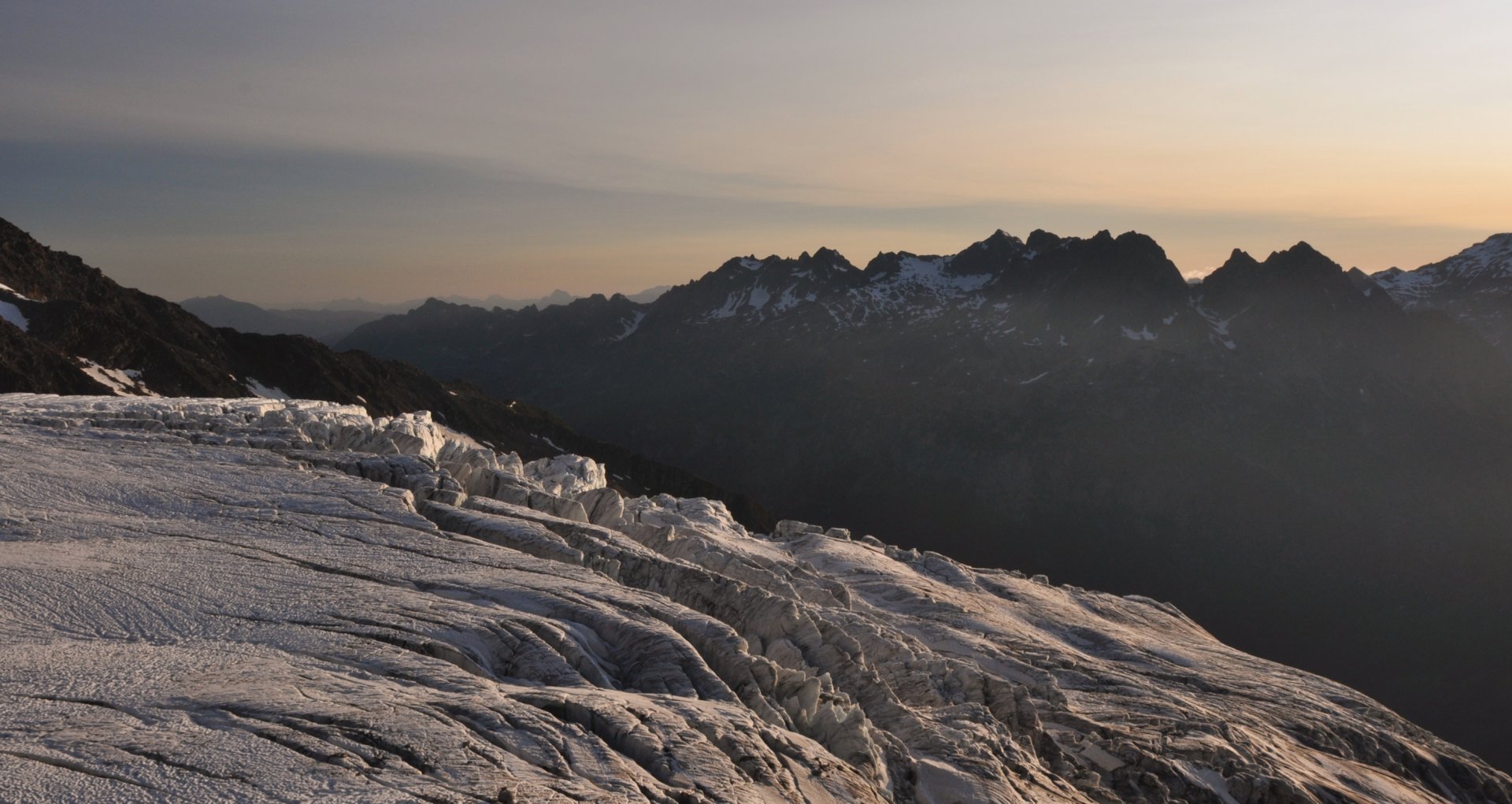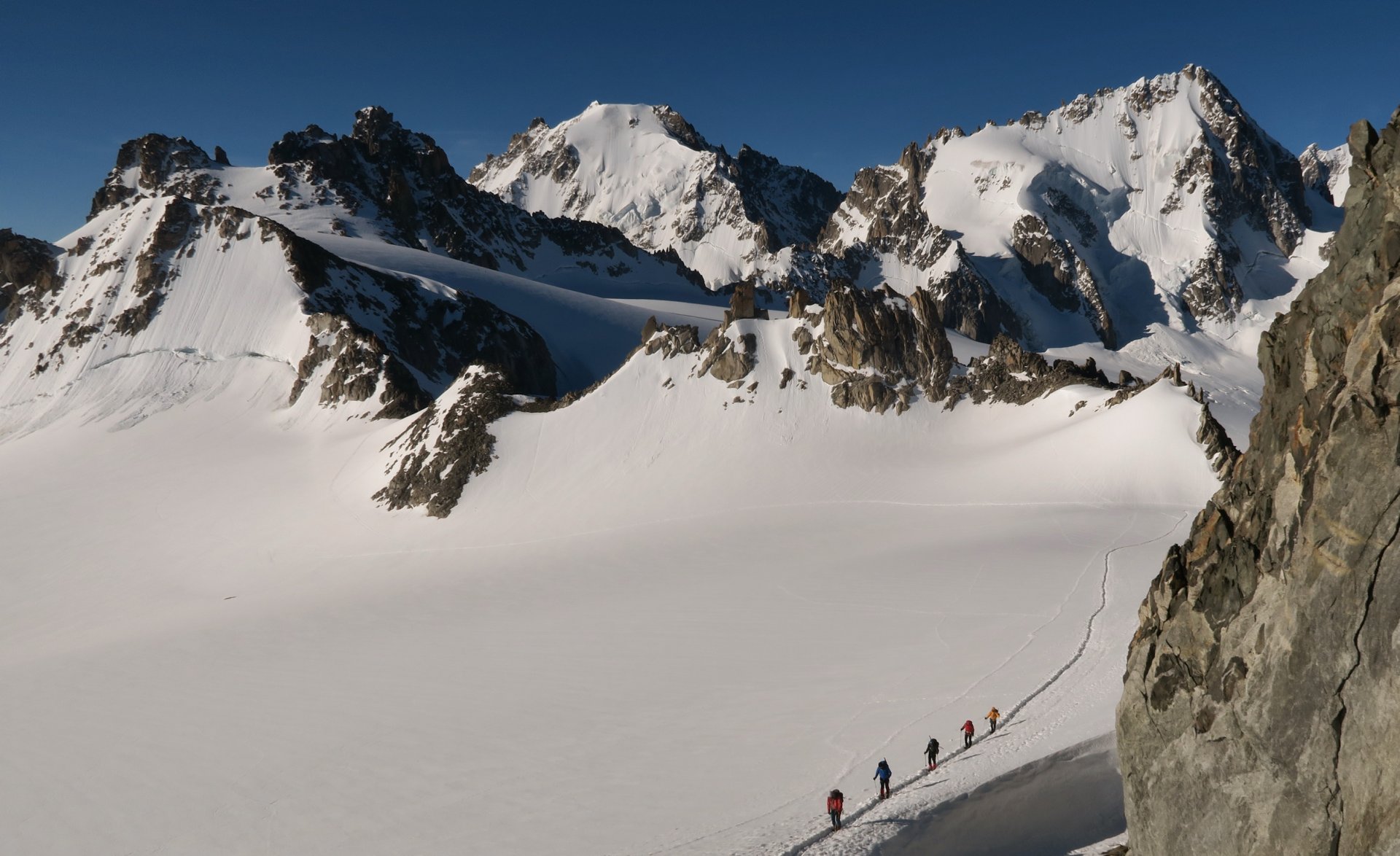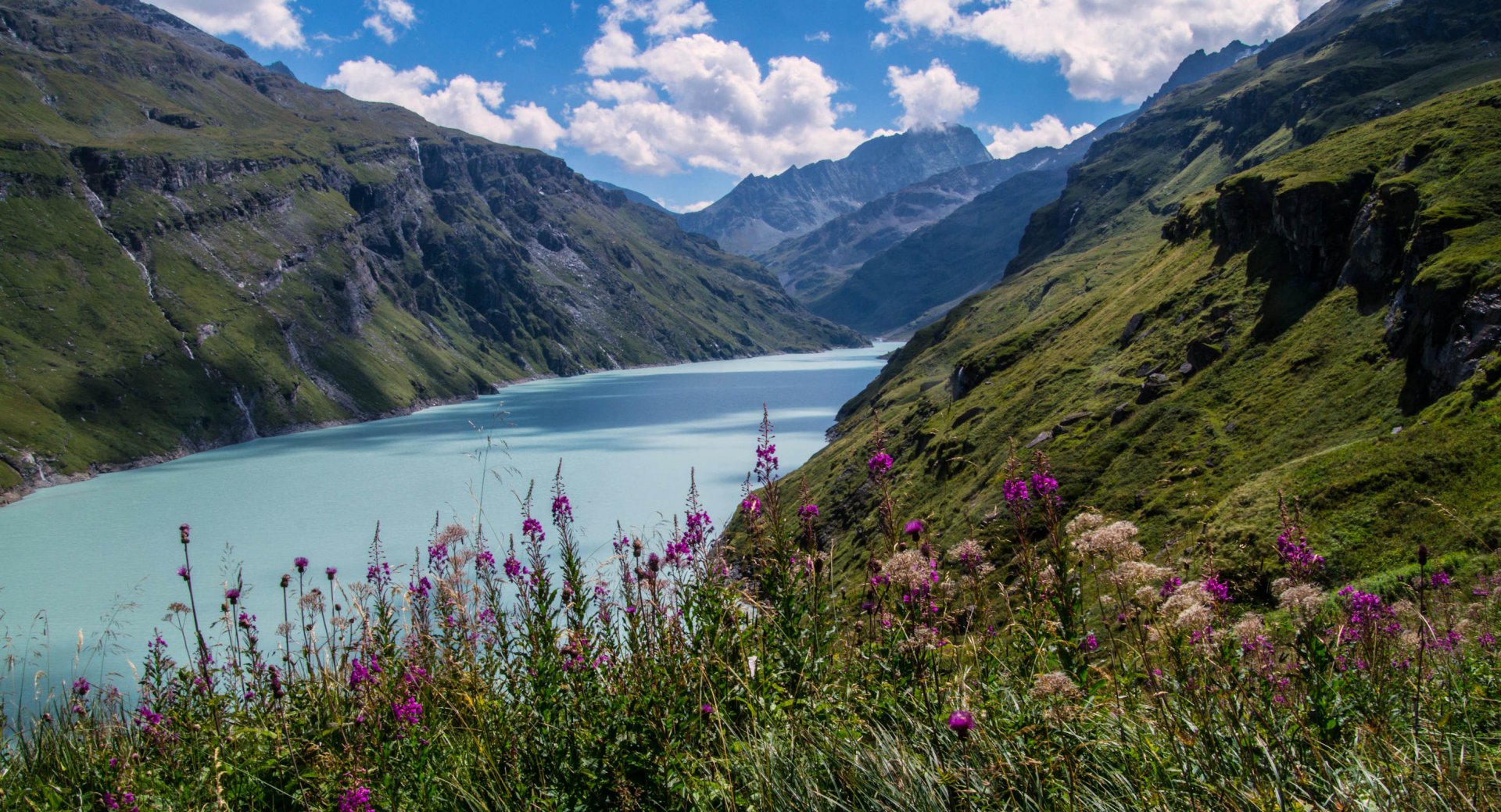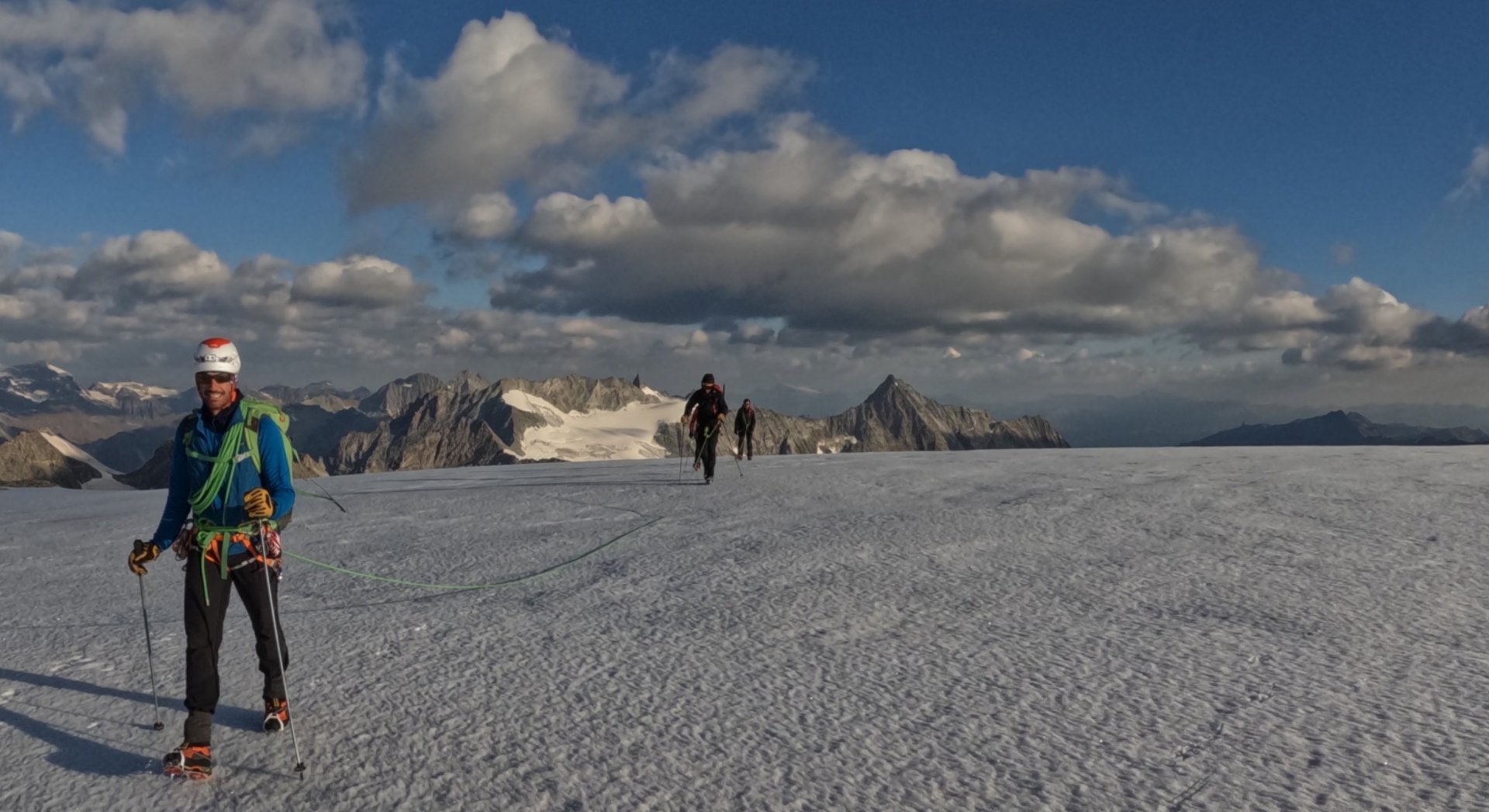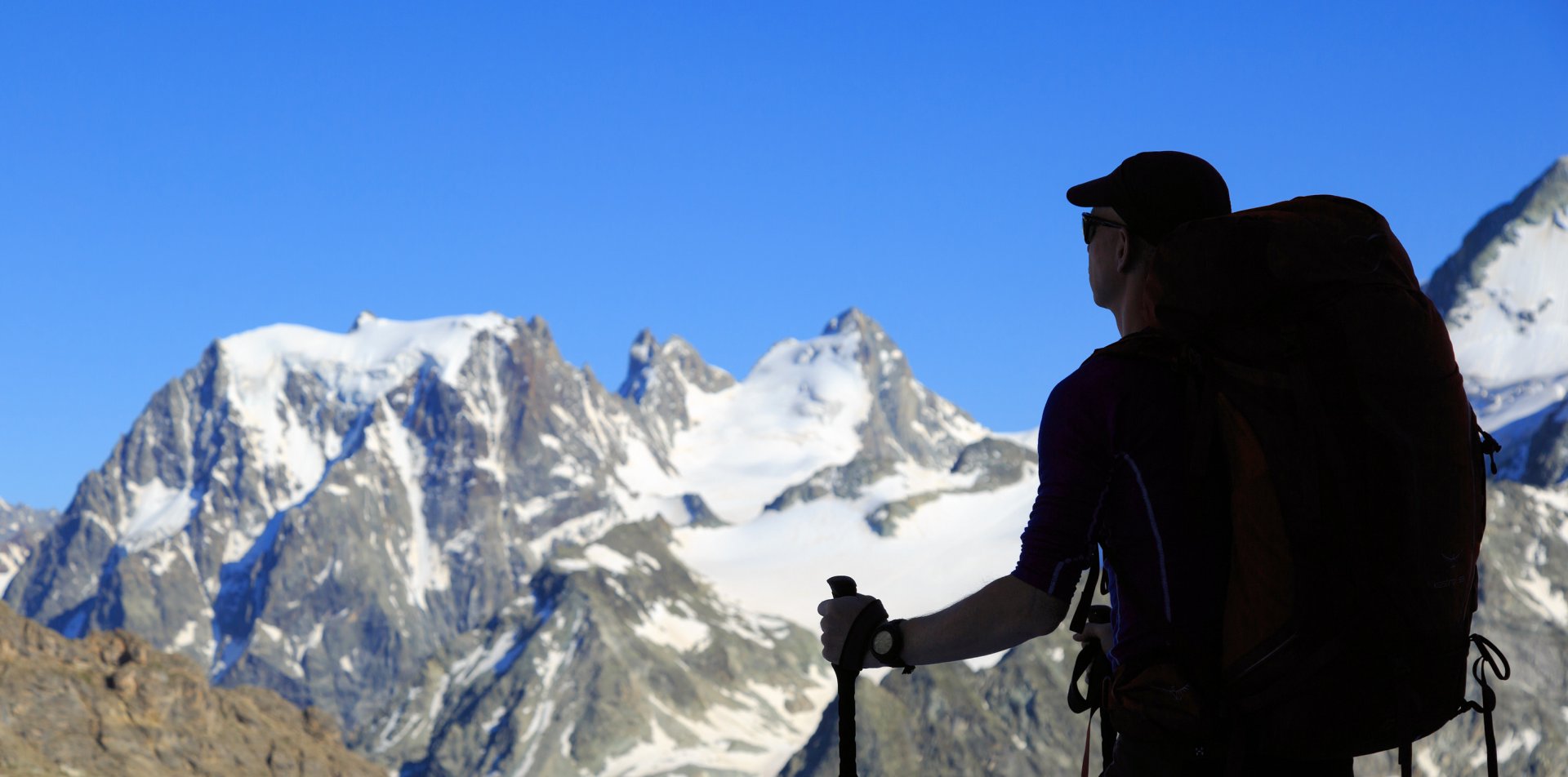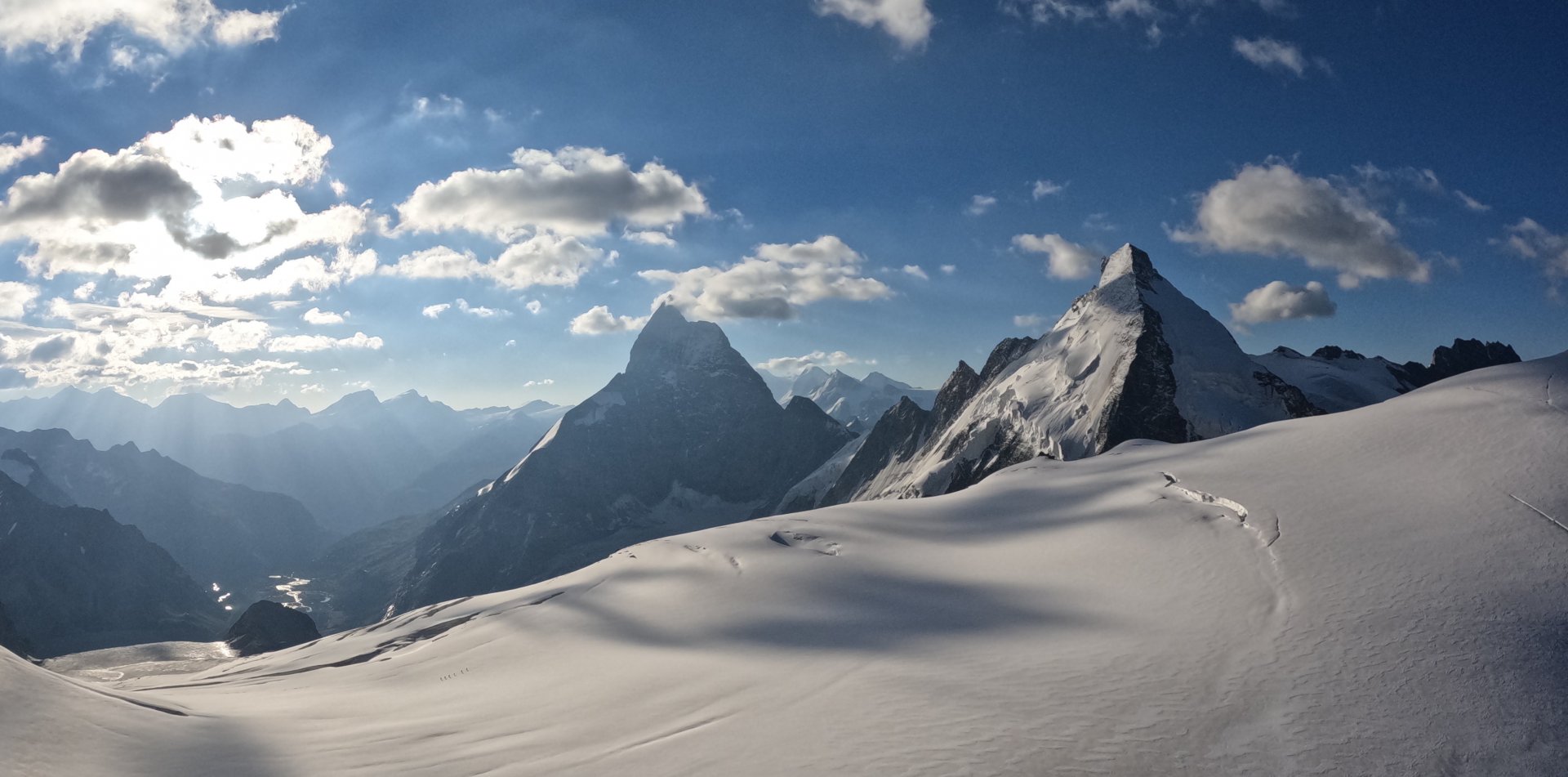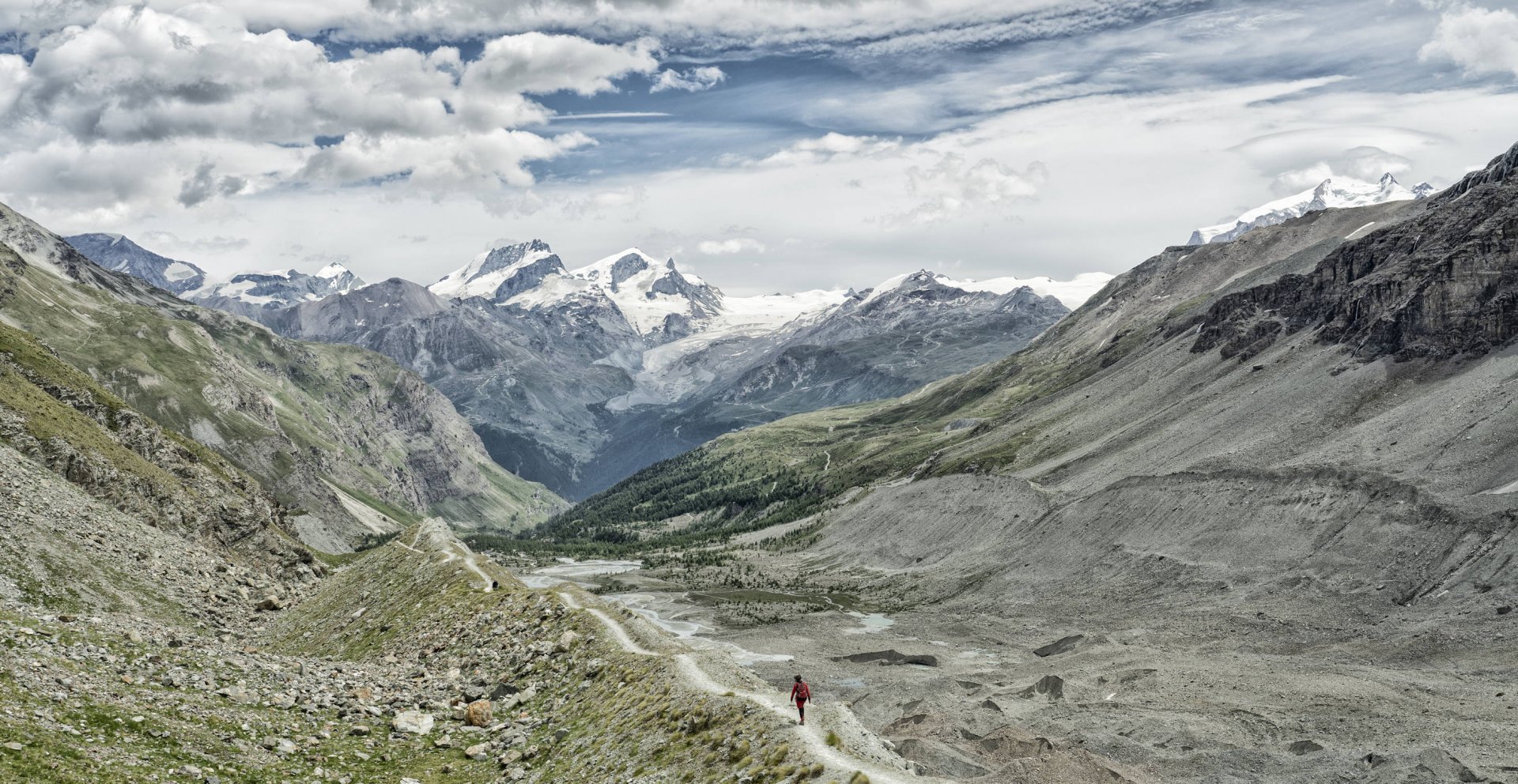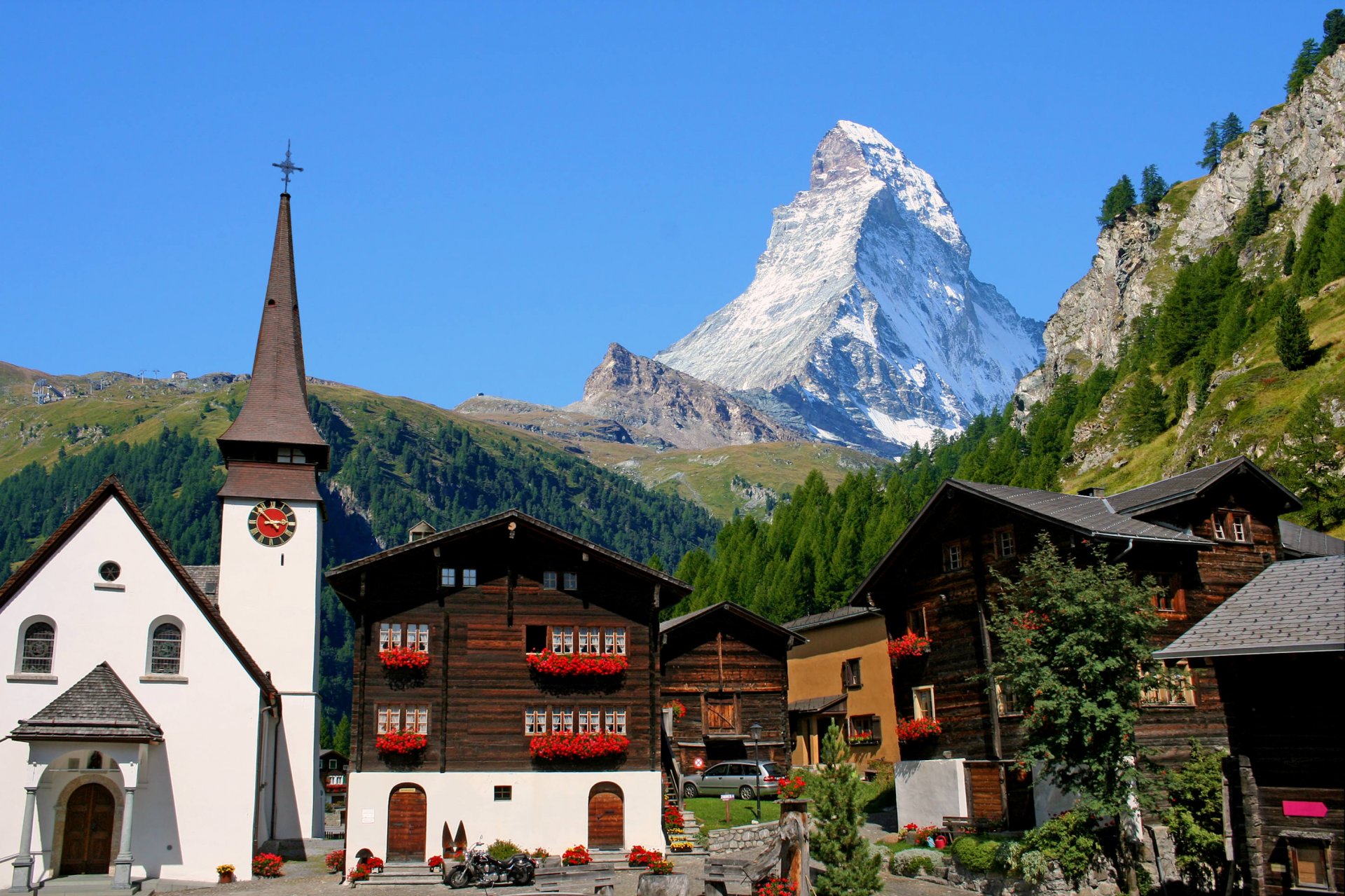Follow us
Contact us
Glacier hiking Chamonix to Zermatt by glaciers





Physical Level 1: For individuals who engage in occasional physical activities, positive elevation gain of up to 300m.
Physical Level 2: For individuals who engage in regular physical activities, positive elevation gain of up to 600m or routes above 3500m.
Physical Level 3: For individuals who engage in regular endurance activities, positive elevation gain of up to 900m or routes above 4000m.
Physical Level 4: For individuals who engage in regular endurance activities, positive elevation gain of up to 1300m.
Physical Level 5: For individuals who engage in intensive endurance activities, positive elevation gain exceeding 1300m.





Technical Level 1: For regular hikers wishing to discover mountaineering. The route is not very steep and is well-marked, or the activity may also take place in beginner-friendly areas.
Technical Level 2: For experienced hikers wishing to discover mountaineering. The route includes short, steep sections and may involve scree or rocky ridges, requiring surefootedness.
Technical Level 3: For occasional mountaineers (2 to 5 recent outings). The route includes steep sections requiring prior climbing experience at a French grade 3c level and/or mastery of crampons and ice axe use.
Technical Level 4: For regular mountaineers (5 to 10 recent outings). The route requires climbing at a French grade 4c level and mastery of mountaineering techniques, including the use of crampons and an ice axe, as well as basic roping and belaying techniques.
Technical Level 5: For experienced mountaineers (more than 10 recent outings). The route requires climbing above a French grade 4c level and mastery of mountaineering techniques, including the use of crampons and ice axes for ice climbing, as well as advanced roping and belaying techniques.
The Haute Route is certainly the most famous glacier trip of the Alps. It connects the two historic capitals of mountaineering with passes over 3000m. This trip will take you to some of the most spectacular places in the Alps: from the Glacier du Tour to the foot of the Matterhorn: it is a guaranteed change of scenery. The exceptional beauty of the landscapes crossed, makes it an essential objective. Despite its notoriety, the Haute Route is a serious glacier trip requiring a good physical form.
Why this trip in 7 days ?
The Haute Route, via our itinerary, is traditionally completed in six days; Groups are go down to Zermatt directly, without passing a night in the Schonbiel hut. Consequently, the last day is very long and can be particularly exhausting regarding the glacier conditions. We propose you to make the route more consistent and enjoy the ambiance of the Haute Route longer.
Group session associates several people who don’t know each other. It allows for a planned program to benefit from an attractive price on fixed dates. This formula is ideal for people looking for the friendliness of a group.
Dates : See below for the group booking module
Price 2026 : 1875€ per person, based on a minimum of 4 persons
Registration possible from age 18.
Including in the package :
- mountain guiding services
- 6 Nights in mountain hut or inn with dinner and breakfast
- lift tickets
- transfers mentioned in the program
Not included in the package :
- personal equipment
- daily lunches : pack a little bit of space in your backpack
- bottle of water in each mountain hut
- other drinks
- mandatory repatriation insurance
- transfer to the meeting point and transfer back from Zermatt to Chamonix (145€/pers)
In this section, find all the information about this activity. To prepare your trip effectively, refer to the guides’ tips. They share their expertise and recommendations, ensuring you have a great experience.
Meeting point : Meet at 10.00am at the Compagnie des Guides office in Chamonix. our finishes in Zermatt. Optional transfer back to Chamonix (120€/person)
Physical level : Suitable for experienced hikers. Daily hikes involve a vertical gain of up to 1000 meters and last 8 to 10 hours per day
Technical level : Prior glacier-hiking experience with crampons is necessary
Guiding policy : 4 to 6 people. Registration possible from age 18
Accommodation : During the trip, you will stay in huts or hostels (day 2) for 6 nights on a half-board basis. Please note that water is not provided in the hut. Before & after the trip: We have some hotel partners in Chamonix with special prices for our customers.
Documentation : Participants must have mountain sports insurance with repatriation cover. We strongly recommend that this also includes cancellation cover. You can take out insurance when you sign up. Participants must also take valid ID with them
Documents available for download
We recommend you take particular care over you choice of equipment, as it plays a large role in the success of your trip. Weight is critical, and you must always evaluate the weight-to-comfort ratio to find the best compromise.
Equipment
- 35-litre backpack
- High-altitude mountaineering boots that are not too tight
- Gaiters, if needed for your trousers
- Telescopic trekking poles
- Crampons with anti-balling plates; helmet, harness and straight ice axe
Clothing
- Warm hat that can be worn under a helmet
- Sun hat or cap
- Neck protection such as a ‘Buff’
- ‘Micro-fibre’ style long-sleeve base layer
- Fleece
- ‘Gore Tex’ style shell jacket with hood
- Down jacket
- Base layer leggings
- A trekking trousers,
- A short,
- ‘Gore Tex’ style over-trousers
- Warm specialist walking socks
- Lightweight specialist walking socks
- Ski gloves or good quality mitts
- Leather or fleece gloves
- Change of clothes at your discretion
Accessories
- Category 4 sunglasses
- Ski goggles
- Headtorch
- Sheet sleeping bag
- Water bottle (minimum 1.5l) and thermos bottle
- Personalised first aid kit with a minimum of: sun cream, lip balm, cotton buds, blister kit, antisickness medication
- Watertight bag to contain your ID/passport and Euros
NB : you can load your electrical devices in every hut
Our Rental Partners : You can rent your equipment with our rental shops partners and benefit from special price Millet (excluding crampons, ice axes and helmet), Sanglard Sports, Ravanel & Co & Concept Pro Shop
Our Equipment Partners : Millet, Dynastar, Julbo, Grivel & Monnet
Itinerary
From Chamonix to Albert premier hut
Rendez-vous at 10.00am at the Compagnie des Guides de Chamonix (190, place de l’église). Your guide will check your equipment & give you food supplies. Then, with your car or by public free bus, rendez-vous at Le Tour village (1450m / 4757ft). We ride the gondola & the chair lift to Col de Balme (2180m / 7152ft). We start walking on a pleasant path and reach the moraine of Glacier du tour. After a short break to the Albert 1er hut (2702 / 8864ftm), we go down on the glacier to learn the techniques for moving across icy terrain. Night in Albert 1er hut.
Vertical ascent: 600m / 1968ft | Distance : 3,5km
From Albert premier hut to Champex
Early in the morning, we start our glacier adventure on the Glacier du Tour. We go up to the Col Supérieur du Tour (3289m/10790ft) and enter in Switzerland trough the Glacier du Trient. We continue on a balcony path to take the lift of la Breya (2200m/7217ft). We arrive in Champex (1500m /4921ft) where we spend the night in hotel.
Vertical ascent: 714m/2342ft - Vertical descent: 1200m/3937ft | Distance : 10,9km
From Champex to Cabane de Chanrion
Transfer to the Mauvoisin dam (1975m/6397ft), starting point of our day in the mountain pastures. Your guide will tell you about the ice breakup of Giétro, natural catastrophe that devastated the Val de Bagne in 1818. Long crossing over the lake, facing the Tournelon Blanc (3700m/12139ft) and the Combins (4313m/12140ft). We reach the Cabane de Chanrion (2461m/8074ft) where we spend the night.
Elevation gain: 485m/1591ft | Distance : 8,5km
From Cabane de Chanrion to Cabane des Vignettes
We reach the basin of the Otemma Glacier. We start walking up the gentle slope of the glacier for 8 km. The way up - a bit monotonous on its length - takes place in a stunning glacial atmosphere. At Col de Charmotane (3015m/9891ft), we turn towards the Cabane des Vignettes (3160m/10367ft), overlooking the glaciers of this sector. Night at the hut.
Elevation gain: 770m/2526ft / Elevation loss: 80m/262ft | Distance : 12,5km
From Cabane des Vignettes to Cabane Bertol
We start the journey with a short downhill to the glacier of Mont Collon, which we hike up until Col de l’Evêque (3392m/11128ft). Then, we go down the Haut glacier d’Arolla until the Plan Bertol (2550m/7381ft); from which we start our climb to the Cabane Bertol (3311m/10862ft). Perched on a rocky promontory, we have to take a series of ladders to reach the Cabane Bertol.
Vertical ascent: 950m/3116ft -Vertical descent: 1050m/3444ft | Distance : 13,4km
From Cabane Bertol to Cabane Schonbiel
We traverse the Grand Planteau of the glacier of Mont Miné to reach Tête Blanche summit (3710m/12171ft). It is a magnificent point of view on the Dent Blanche (4357m/14294ft), the Matterhorn (4476m/14685ft) and many 4000 meters peaks. We go down to the glacier de Stocki and the glacier du Zmutt. From there, we reach the comfortable Schönbiel hut (2694m/8838ft).
Vertical ascent: 565m/1853ft - Vertical descent: 1100m/3608ft | Distance : 11,7km
From Cabane de Schönbiel to Zermatt
We continue or descent to Zermatt trough a peaceful path in the middle alpine pasture. All along the descent, we could admire the view on the Matterhorn. We arrive in Zermatt at the end of the morning. Lunch in Zermatt. Transfer to Chamonix in OPTION at the beginning of the afternoon.
Vertical descent: 1086m/3562ft | Distance : 10,3km
Booking
Book your activity
Calculate your carbon footprint
Discover the carbon emissions of this activity and add your trip to the meeting point.
CO2 emitted per person for the activity: 104 kg. Learn out more about the footprint calculation of this activity
CO2 emitted per person for the activity: 104 kg. Learn out more about the footprint calculation of this activity
CO2 emitted per person for this activity & journey(s) = 0 kgIn order to limit global warming to +2°C by 2100, the COP-21 agreement stipulates that each human should emit no more than 2t of CO2 per year. According to the French Ministry of Ecology, today European citizens emit an average of 11t per year, and American citizens emit an average of 21t annually., or 10.4€The price for a ton of CO2 is currently 100€ in the European Union to offset.
Find out more about our zero impact strategy.
